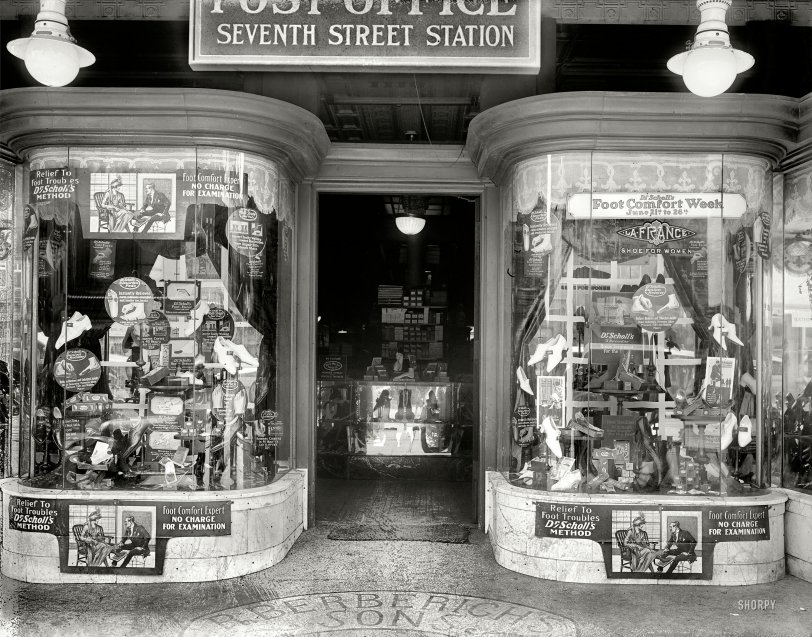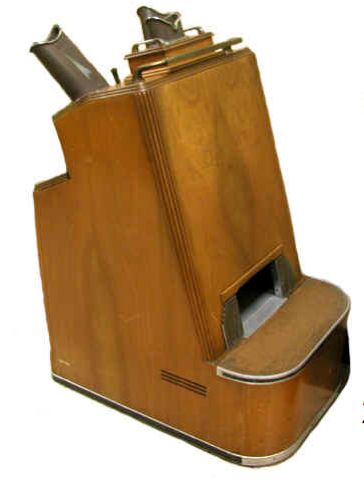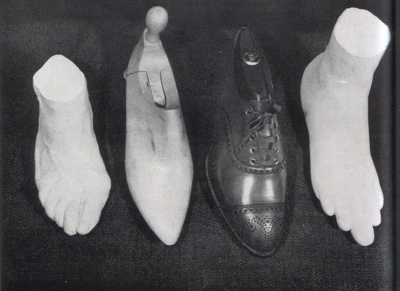


Framed or unframed, desk size to sofa size, printed by us in Arizona and Alabama since 2007. Explore now.
Shorpy is funded by you. Patreon contributors get an ad-free experience.
Learn more.

- Baldwin 62303
- Baldwin VO-1000
- Cold
- No expense spared
- Tough Guys
- Lost in Toyland
- And without gloves
- If I were a blindfolded time traveler
- Smoke Consumer Also Cooks
- Oh that stove!
- Possibly still there?
- What?!?
- $100 Reward
- Freeze Frame
- Texas Flyer wanted
- Just a Year Too Soon
- WWII -- Replacing men with women at the railroad crossing.
- Yes, Icing
- You kids drive me nuts!
- NOT An Easy Job
- I wonder
- Just add window boxes
- Icing Platform?
- Indiana Harbor Belt abides
- Freezing haze
- Corrections (for those who care)
- C&NW at Nelson
- Fallen Flags
- A dangerous job made worse
- Water Stop
Print Emporium
Foot Comfort Week: 1920

June 1920. "Berberich store window, Seventh Street." The venerable Washington, D.C., shoe emporium. In the era of confining footwear, bunions, corns and calluses, it was Dr. Scholl to the rescue. National Photo Co. View full size.
A quick walk back on memory lane.
This shoe store looks almost exactly like the one I remember from my childhood: Slosberg's in Gardiner, Maine. I can close my eyes and drift back to those days when I would walk into the store, and breathe deeply; taking in the smell of shoe leather and pipe tobacco (Mrs. Slosberg's husband smoked a pipe). I distinctly remember that Mrs. Slosberg always tended the customers; and her husband went and found the shoes on the racks on the walls that, while only about 20 levels high, seemed like a hundred. She would give each child a hug, sit them down, take their shoes off them, and massage their feet to get them loosened up to the right shape and size for proper fitting. I always felt like some kind of royalty with the way I was treated. I also remember having to put my old shoes back on to leave the store, as my mother didn't want me scuffing up the new ones. Somehow, today's experience in buying shoes just isn't quite the same.
Oh my goodness willc! I saw
Oh my goodness willc! I saw that exact display at an exhibition at the Cooper Hewitt in NY in the mid-1980's. I've never forgotten the shape the foot with the big toe in the middle. Too funny.
Shoe Store Fluoroscopy
I remember, during my childhood in the 1930s, my mother taking me to the local Thom McAn shoe store. Before she invested the four or five dollars in a pair of shoes that I would soon outgrow, I would stick both feet into the console fluoroscopy machine, prominently situated at the front of the store. There were 2 viewing ports not unlike those on the hand cranked Nickelodeon machines. I looked through one of those ports, to see my toes wiggling in the X-ray machine's green light. My mother and/or the salesman taking turns looking through the other viewer to make sure I had plenty of room for those toe bones to grow. These devices would be around until the 1960s, when the Feds, realizing the X-raying dangers banned their use.

History Repeats
The clerk-in-charge of the Seventh Street (Post Office) Station, located in Berberich's at 1118 7th Street, NW, was Leona M. De Lawder. The post office's hours were 8am to 6pm, closed Sundays and holidays.
Interesting that the USPS, in wanting to close down free-standing post offices, is looking at the contract station inside of established business model.
Small feet
I've heard that women used to be ashamed of larger feet and would buy shoes smaller than really needed. I've evidenced this in many of the photos of the 20s - they always seem to have "foot pillows" popping out the top of the foot!
Weak claim.
So, you get foot comfort this week -- then what happens?
Soon to come
I don't see the Zino-Pad and I searched the pic as close as I could. It was invented by Dr Scholl in 1918 for corn removal, but probably wasn't in full distribution by 1920.
Adding Insult to Injury
So we have to wipe our corn and bunion covered, crooked-toed feet before entering your establishment? Gee thanks Mr. Berberich.
Fashionable Cruelties
In the 1920s American and European missionaries were quick to condemn the horrors of traditional Chinese foot binding, but our own shoe fashions were hardly more rational, and Dr. Scholl made a fortune providing remedies to ease the pain of wearing the "beautiful" pointed shoes that deformed our feet. Many people today still think that those vintage shoes look prettier than shoes shaped like real human feet, even if we don't wear them, and that undeformed "peasant" feet with anatomically normal wide toes are somehow low-class. The architect and social historian Bernard Rudovsky (1905-1988) famously called these beliefs into question in his 1947 exhibition "Are Clothes Modern?" at the Museum of Modern Art in New York, with his model of a human foot that fit our symmetrical shoes by putting the big toe in the middle.

Shoe du Jour
Despite the date, some of those ads look oddly contemporary. Anyway I'm sad that I missed Foot Comfort Week. Maybe next June 21-26, 1920.
























On Shorpy:
Today’s Top 5